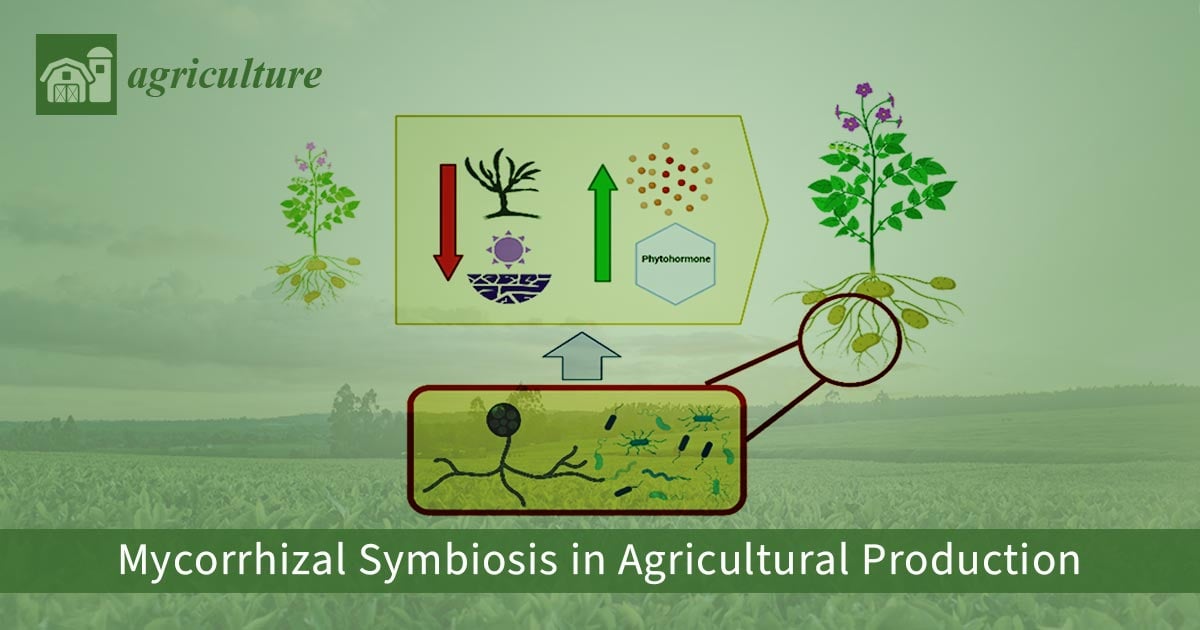Mycorrhizal Symbiosis in Agricultural Production
A special issue of Agriculture (ISSN 2077-0472). This special issue belongs to the section "Crop Production".
Deadline for manuscript submissions: 10 May 2024 | Viewed by 2109

Special Issue Editors
2. The Swiss National Centre of Competence in Research Microbiomes, Switzerland
Interests: mycorrhizal symbiosis; arbuscular mycorrhizal fungi; genetics; rhizosphere; plant physiology; holobiont; holobiont chronobiology; co-evolution; ecology
Special Issue Information
Dear Colleagues,
The green revolution was critical in the fight against global starvation. Together with crop breeding programs, the development of chemical fertilisers and pesticides helped farmers to secure crop yields. Unfortunately, in the following decades, the applied chemicals resulted in serious pollution. There is a new wave of revolution in agriculture aiming to harness various microorganisms interacting with plants to realise sustainable and ecosystem-friendly agriculture. The symbiosis between mycorrhizal fungi and plants is at the centre of the application. As symbionts of almost all crops on Earth, mycorrhizal fungi help plant nutrition uptake from soil and enhance plant resistance against various biotic and abiotic stresses. It has been demonstrated that harnessing mycorrhiza has great potential to increase the quantity and quality of crop yields. Thus, the application of mycorrhiza and interacting microbes for crops is a new frontier in agriculture.
However, our understanding of symbiosis for crop productivity change is still limited, especially at the field level. This further hinders the knowledge on appropriate application, resulting in controversial results regarding the application benefits for crops. Therefore, it is crucial to document our current state of knowledge on harnessing mycorrhizal symbiosis for crops and have critical discussions about various aspects of the mycorrhiza application for agriculture.
This Special Issue aims to collect reviews and original papers covering advances in the understanding of mycorrhiza in crops. From pessimism to optimism, all aspects of mycorrhiza application for crops are welcome. The open and critical evaluation of current mycorrhizal fungi and soil microbe applications will lead to the appropriate utilisation of this symbiosis for next-generation agriculture.
Dr. Soon-Jae Lee
Prof. Dr. Li Wang
Guest Editors
Manuscript Submission Information
Manuscripts should be submitted online at www.mdpi.com by registering and logging in to this website. Once you are registered, click here to go to the submission form. Manuscripts can be submitted until the deadline. All submissions that pass pre-check are peer-reviewed. Accepted papers will be published continuously in the journal (as soon as accepted) and will be listed together on the special issue website. Research articles, review articles as well as short communications are invited. For planned papers, a title and short abstract (about 100 words) can be sent to the Editorial Office for announcement on this website.
Submitted manuscripts should not have been published previously, nor be under consideration for publication elsewhere (except conference proceedings papers). All manuscripts are thoroughly refereed through a single-blind peer-review process. A guide for authors and other relevant information for submission of manuscripts is available on the Instructions for Authors page. Agriculture is an international peer-reviewed open access monthly journal published by MDPI.
Please visit the Instructions for Authors page before submitting a manuscript. The Article Processing Charge (APC) for publication in this open access journal is 2600 CHF (Swiss Francs). Submitted papers should be well formatted and use good English. Authors may use MDPI's English editing service prior to publication or during author revisions.
Keywords
- mycorrhizal symbiosis in crops
- mycorrhizal inoculum application
- misuse of inoculum
- future perspectives of mycorrhizal application
- mycorrhizal symbiosis on crops’ abiotic stress resistance
- interaction mechanism between mycorrhiza and crops
- mycorrhizal community in crop roots






